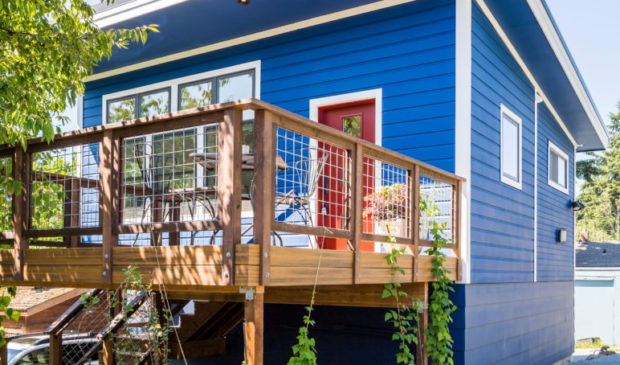Housing and Planning Committee examines barriers to ADU construction
Thursday, October 7, 2021 by
Willow Higgins The city’s Housing and Planning Committee met Tuesday to discuss the regulations for accessory dwelling units, secondary housing units located somewhere on a residential lot. As Austin’s housing crisis persists and the median sale price of homes continues to rise, ADUs can sometimes provide a more affordable housing option. But cumbersome local policies regulating ADUs can deter or prevent homeowners from building accessory units, and limit who may reside in those spaces.
The average sale price of an Austin home has risen steeply over the past decade, reaching about $550,000 this year – a price higher than most locals can afford. The committee met with a shared desire to rethink ADU regulation to make these units more accessible to average Austinites who might be struggling to find housing options within their price range, and to provide more homeowners the opportunity to make passive income by renting out living spaces in their backyard.
This isn’t the first time the city has looked inward at these policies. In 2020, City Council passed a resolution intending to make it easier for residents to build ADUs, and this summer the Housing and Planning Department issued a response to that resolution, outlining further options for the city to explore. City staff noted that financing obstacles were still making it challenging for homeowners to construct ADUs, despite streamlined permitting put in place, and that regulatory barriers were continuing to spike ADU construction costs.
Greg Casar, the chair of the Housing and Planning Committee, began Tuesday’s meeting with the goal of looking for “small places and small programs (that) can provide big wins” for people in the market to build secondary homes on their property. The meeting featured speakers discussing alternative options and programs aimed at making ADU construction more accessible.
Erik Preston, who represented Villa Homes, a California-based company that builds prefabricated ADUs at a lower cost than a stick-built home, said in a sample of about 330 people surveyed, half of those interested in building an ADU on their Austin property were disqualified based on zoning alone, a statistic Council members seemed to find jarring.
Prefab ADUs, Preston said, can be a simpler and more affordable option because they’re built in compliance with federal regulation and often able to bypass local regulation. According to Preston, Villa Homes ADUs can cost less than $200,000 per unit, a sticker price tens of thousands of dollars cheaper than their stick-built counterparts.
The meeting also featured members of the local nonprofit Community Powered Workshop, which offers help building ADUs as a source of secondary income for historically underserved communities. The program has facilitated the construction of 18 “alley flats,” a number they say is not representative of expressed interest.
Nuances in the code rule out many, if not most, homeowners from building and renting out ADUs. While most of these nuances are difficult to enforce, their existence alone has the potential to ward off rule-followers. Different types of units require different lot sizes, parking requirements, zoning districts or resident types, Brent Lloyd of the city’s Development Services Department explained. For example, guest houses have lax regulations, but must only be occupied by non-paying guests. “Accessory apartments” are units attached to the original housing structure, but can only be occupied by residents with disabilities or over the age of 60, and cannot be garage conversions. ADUs can be built to provide on-site employee housing only if they’re on a lot at least 15,000 square feet in size, and residents are employed on a project housed on that very lot.
Thomas Medina of Community Powered Workshop says these regulations can function as barriers to people interested in their program. Oftentimes, he said, moderate-income households want to convert their garage into an ADU, which sheds construction costs, but their zoning doesn’t allow for a garage conversion. He also said sometimes the development process is just too confusing and cumbersome for homeowners to persevere through.
The committee will be taking a closer look at the barriers outlined Tuesday in an effort to pave the way for an easier development process. Council Member Kathie Tovo, who is not on the Housing and Planning Committee, announced that her team has drafted a resolution that includes options for making an investment in ADUs more financially accessible, including financial incentives and pre-approved architect plans. These proposals will be heard at an upcoming City Council meeting.
Photo made available through a Creative Commons license.
The Austin Monitor’s work is made possible by donations from the community. Though our reporting covers donors from time to time, we are careful to keep business and editorial efforts separate while maintaining transparency. A complete list of donors is available here, and our code of ethics is explained here.
You're a community leader
And we’re honored you look to us for serious, in-depth news. You know a strong community needs local and dedicated watchdog reporting. We’re here for you and that won’t change. Now will you take the powerful next step and support our nonprofit news organization?










